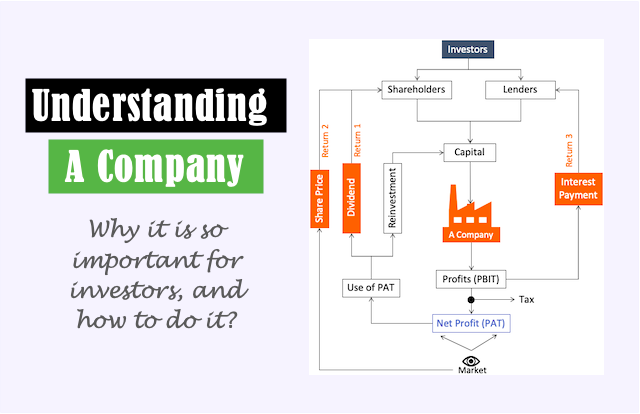In the last six months, the shares of Bajaj Finance have seen a price correction of about 10%. I have always found the business of Bajaj Finance exciting, but I could not invest in it due to valuation concerns. I use my Stock Engine to estimate the intrinsic value of my stocks. From the peak of Rs.8,000 per share level (October 2023) that stock is not trading at Rs.6,600 per share level (down 20%). With this perspective in mind, I thought to share my views on the business aspect of Bajaj Finance.
Bajaj Finance (BFL) is a stalwart of its industry. In the last 10 years, the revenue of the company has increased from Rs.5,000 crore to Rs.40,000 crore. However, for most companies, such phenomenal growth comes at the cost of profitability. But Bajaj Finance has maintained its operating profit margin of close to 65%. This is one aspect of Bajaj Finance’s business model that makes it a special company.
In this blog, I’ll try to delve into the nitty-gritty of Bajaj Finance’s business operations, income streams, profitability, and growth prospects. Let me unravel for you a few unique insights about this company that goes beyond the surface.
#1 The Business
Bajaj Finance is a leading company in finance that uses data, technology, and analytics to make smart decisions. We can imagine it as the wizard behind the scenes. It uses special tools and tricks to understand and assist its customers in sales and in providing after-sales support.
Bajaj Finance has a lot of jobs it does. It’s like a superhero with many powers. The customer acquisition process of the company is mostly data analytics-driven. The company knows whom to approach so that the interaction converts into a deal.
As new customers get on board, the algorithm suggests relatable products of the company to these customers. The company also closely monitors the risks, manages debts, and ensures customers get excellent service. To do all this, Bajaj Finance uses cool technologies like Big Data (imagine a giant pool of information), Cloud Computing (think of storing things on the internet), and Open-Source software (like a toolbox where everyone shares tools).
One thing that makes Bajaj Finance special is its ability to make decisions quickly. It uses machine learning models (smart robots), and OCR (a tool to read messy handwriting), and turns messy information into organized data. These technologies help the company to keep the customer experience smooth.
1.1 More Details about its business
Bajaj Finance is a major financial services company in India. It is part of the Bajaj Finserv group.
- Focus on Lending: They primarily provide loans to consumers (individuals) and businesses (SMEs and commercial).
- Wide Range of Products: They offer various loan options like consumer durables financing. It is a credit/finance option for the purchase of household appliances, electronic goods, etc. The company also provides two-wheeler loans, personal loans, and business loans.
- Strategic Partnerships: Bajaj partners with manufacturers and retailers to boost their sales. How? By offering schemes like 0% interest EMI. Suppose you want to buy a washing machine. But the ₹20,000 price tag is daunting. Bajaj Finance partners with the store to offer a “No Cost EMI” plan, splitting the cost into 12 monthly payments with no interest. This makes the purchase easier for you to buy and also boosts sales for the store. Bajaj Finance earns revenue from processing the loan.
- Revenue Streams: Their income comes from interest on loans, processing fees, and other charges like late payment penalties and EMI card fees.
#2 Income Streams
Bajaj Finance generates revenue through several key income streams:
- Interest Income: This is the primary source of income. It comes from the interest charged on various offered loans. They include consumer durable loans, two-wheeler loans, personal loans, and business loans.
- Processing Fees: The company charges processing fees for loan applications. This fee covers the administrative costs associated with evaluating loan applications and setting up the loan account.
- Other Charges: They also collect other charges like:
- Late payment penalties: These are charged to customers who fail to make their EMI payments on time.
- Prepayment charges: In some cases, a fee is charged if a borrower prepays the loan before the end of the term.
- EMI card fees: An annual fee may be associated with the EMI card used for making loan payments.
These various income streams contribute to Bajaj Finance’s overall profitability and allow them to offer diverse financial services to their customers.
2.1 More Insights:
Bajaj Finance diversifies its income streams through a multi-faceted approach, leveraging its advanced analytics capabilities.
- Credit Lifecycle Management: Bajaj Finance deploys statistical models for risk management at every stage of the credit lifecycle, from acquisition to debt management. This improves the company’s understanding of the associated risks of the business. This type of management improves income reliability.
- Digital Self-Service: The company’s digital transformation journey includes the Bajaj Finserv app and My Account website. It offers over 26 service modules enabling customers to perform various transactions in real time. The adoption of self-service modules has witnessed significant growth. This kind of feature assists customers to make timely payments thereby improving the income stream.
- Assisted Services: The ‘Dynamic Missed Call Service’ and ‘bi-directional SMS’ for customers seeking assistance. These channels offer details on loan information, EMI card details, and more. This kind of non-internet-dependent features can help a wider spectrum of people. It thereby encourages people to keep track of their accounts and make timely payments.
#3. Profitability and Financial Strength
Bajaj Finance stands tall at the intersection of profitability, financial resilience, and promising growth. Let’s delve into the key aspects that paint a vibrant picture of the company’s robust position in the financial services sector.
- The company boasts a massive customer base of 69.1 million and manages assets worth a staggering Rs.247,379 crore.
- Net interest income, a significant financial indicator, reached Rs.28,846 crores. This showcases the company’s substantial earnings from its various financial activities.
- The substantial capital adequacy of approximately 25% surpasses the RBI norms. It is also indicative of a strong financial backbone.
Return on Investments
- The return on assets (ROA) soared to an all-time high of 5.3% in FY2023. It has demonstrated how efficiently the company utilizes its assets to generate profits.
- Return on equity (ROE) stood at an impressive 23.5%. It is reflective of the profitability for shareholders.
Liquidity and Borrowing Management:
- Bajaj Finance maintains conservative liquidity buffers. It has a consolidated liquidity buffer of Rs.11,852 crore as of March 31, 2023.
- Despite policy rate hikes, the company showcased prudent Asset Liability Management (ALM) practices. It has limited the increase in the cost of borrowings to only 23 bps over FY2022.
Non-Performing Assets (NPAs):
- The consolidated gross NPA at 0.94% and the net NPA at 0.34%. These values are among the lowest in the industry (NBFCs). It underscores the company’s robust risk management practices.
- Even in the face of economic volatility, inflation, and rising interest rates, Bajaj Finance has maintained its NPAs at historically low levels.
#4. Growth Prospects
On a consolidated basis, Bajaj Finance recorded a 29% growth in core AUM and a 64% increase in profit after tax in FY2023. This kind of performance has only solidified Bajaj Finance’s position in the financial services sector.
For the period between FY23-27, the company has built a new strategy. It includes the launch of new products, innovations, geographical expansion, and operational enhancements to ensure future growth. The initiatives include financing for new cars, emerging corporate loans business, microfinance, and geographical expansions in the North-East.
The company has plans for a rewards platform, financing for tractor purchases, and a social platform. They are also focusing on additional locations in UP, Bihar, and North-East India.
Bajaj Finance’s financial strength, profitability, and strategic growth initiatives paint a decent narrative of a company poised for continued success. Bajaj Finance’s commitment to innovation, risk management, and customer-centric financial solutions positions it as a good candidate for stability and growth in the financial services sector.
Bajaj Finance is poised for sustained growth. It will be driven by its commitment to innovation and customer-focused approach. The company’s extensive use of analytics, machine learning, and evolving technologies makes it unique in the financial services industry.
But there are challenges to Bajaj Finance in times to come.
#5. Future Challenges For Bajaj Finance
#5.1 Rising competition:
The Indian non-banking financial sector is becoming increasingly competitive, with new players like Jio Financial entering the market. This could put pressure on Bajaj Finance’s market share and margins. Jio Financial’s entry into the market poses a potential challenge to Bajaj Finance’s market share. This is also another reason its shares have seen some corrections in recent months.
- Extensive reach: Jio leverages Reliance’s vast customer base and distribution network, including millions of Jio subscribers, providing wider access to financial services.
- Financial resources: Backed by Reliance’s strong financial standing, Jio Financial has the potential to offer competitive interest rates and loan terms, attracting customers.
- Technological edge: Jio’s experience in the digital space could translate into a seamless and tech-driven financial experience for customers, potentially appealing to tech-savvy demographics.
While Bajaj Finance has a strong foothold in the market, Jio Financial’s unique advantages could disrupt the landscape. It might compel established players like Bajaj Finance to adapt and innovate to stay competitive.
#5.2 Regulatory changes
The RBI banned certain Bajaj Finance products. Regulatory control over financial products will get more stringent with time. For fast-growing financial companies like Bajaj Finance, it might come as a hindrance to keeping up the past growth numbers.
Conclusion
For me, Bajaj Finance is like a powerhouse in the financial services landscape. It blends technological innovation with a customer-centric approach. The business operation of today’s NBFCs can be intricate. These businesses have diverse income streams that make them different from traditional banks. Bajaj Finance has maintained strong profitability and promising growth prospects. As the company continues to navigate the evolving financial landscape, I see emerging opportunities in its stock. If the stock further corrects by another 15% or around, it will make it a value buy.
Have a happy investing.
FAQs
This depends on our investment goals and risk tolerance. While the price decline might seem concerning, it could also be a buying opportunity if the company’s fundamentals remain strong and the long-term outlook is positive. In-depth research into the company’s financials, plans, and industry trends is crucial before making an investment decision.
Several factors could be at play, including overall market conditions, industry-specific issues impacting NBFCs (Non-Banking Financial Companies), or company-specific news that might have affected investor sentiment. Analyzing recent news articles and company reports can help us understand the potential reasons.
Trying to time the market can be risky. While the price might fall further, it could also start to rebound. Focusing on our investment strategy and entry point based on our research and risk tolerance.
Upcoming company earnings reports, industry data releases, or economic announcements can influence the stock price. Keeping an eye on the company’s financial calendar and relevant economic news can be helpful.
Analyzing the company’s growth plans, future product offerings, and the overall NBFC sector outlook can help you assess the long-term potential of Bajaj Finance as an investment.







Great insights shared in this article! Managing personal finances can be daunting, especially with the ever-changing economic landscape. The tips provided here offer practical and actionable advice for anyone looking to secure their financial future. I particularly resonate with the emphasis on creating a diversified investment portfolio to mitigate risks. It’s crucial to stay informed and adapt our financial strategies accordingly. Looking forward to more informative posts like this one!